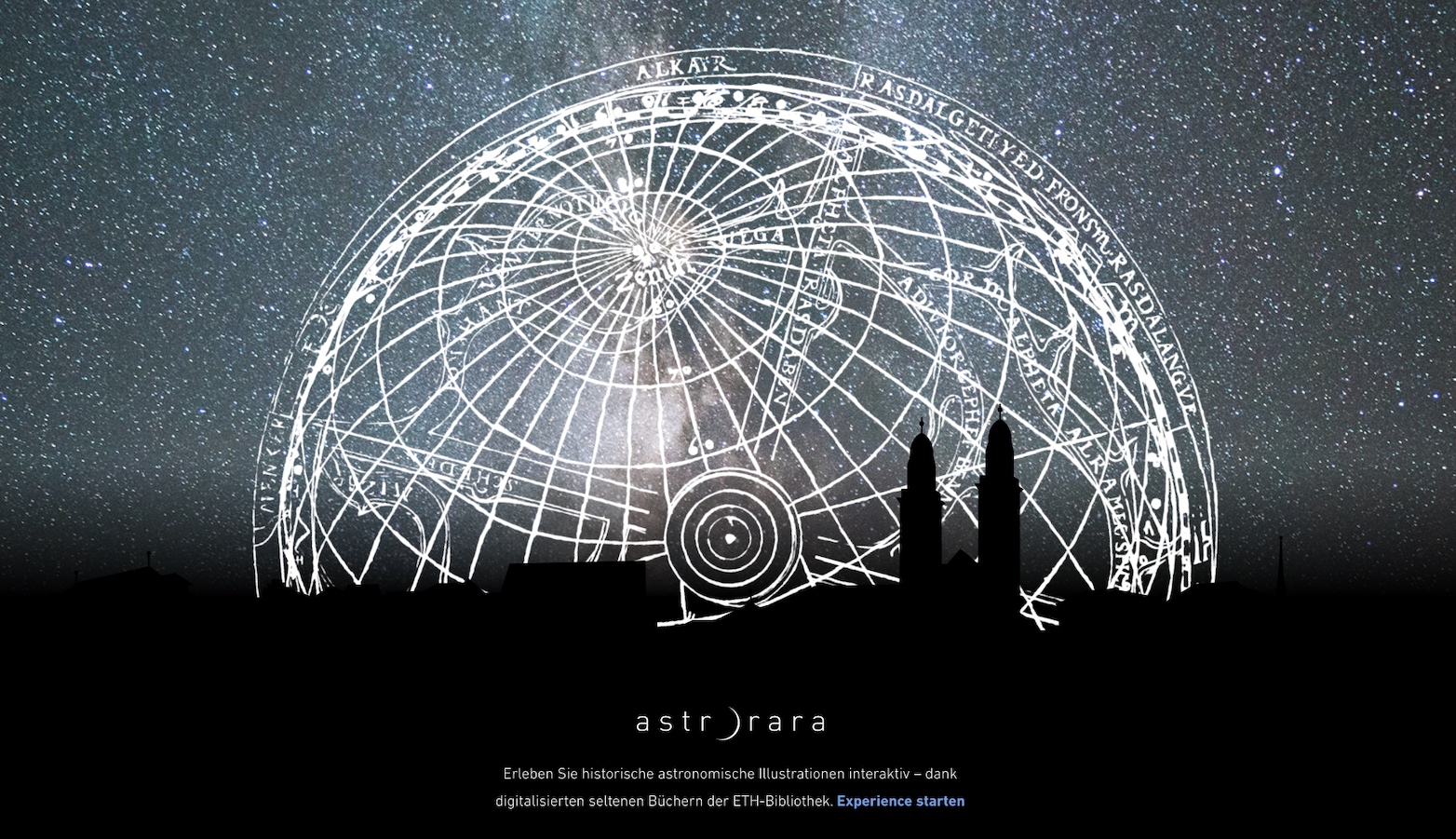A sparkling new look for AstroRara
Just under four years after the launch of AstroRara, users can now discover new content and a revamped design.

An intuitive navigation scheme provides access to selected celestial events that have been converted from old prints into a multimedia experience. The wide-ranging content provided in the web app is accessed using attractive illustrations on the start screen.

Experience two new phenomena from old astronomical works with fascinating visuals, as well as interesting background information about the author and work:
- Christian and ancient Constellations: In his celestial atlas “Coelum stellatum christianum” (1627), Julius Schiller (approx. 1580–1627) attempted to impose a Christian reading of the constellations in the course of the Counter-Reformation. Click to select a constellation. You can then use a slider to switch between the Christian interpretation of the constellations and how they were viewed in antiquity.
- Close Encounter of Moon and Jupiter: In his most successful work “Selenographia” (1647), Danzig scholar Johann Hevelius (1611–1687) published a large number of drawings of the Moon. These include the conjunction of Jupiter and the Moon on the night of 12 to 13 April 1647, which you can now experience in AstroRara.
Experience historical astronomy
AstroRara is a service provided by the ETH Library that can be used on mobile devices and desktop computers. Have you always wanted to know more about the models and the phenomena observed in the night sky? AstroRara lets you do more than just view the historical works of famous astronomers – it allows you experience selected extracts interactively.
Always up to date
Would you like to always receive the most important internal information and news from ETH Zurich? Then subscribe to the "internal news" newsletter and visit Staffnet, the information portal for ETH employees.
